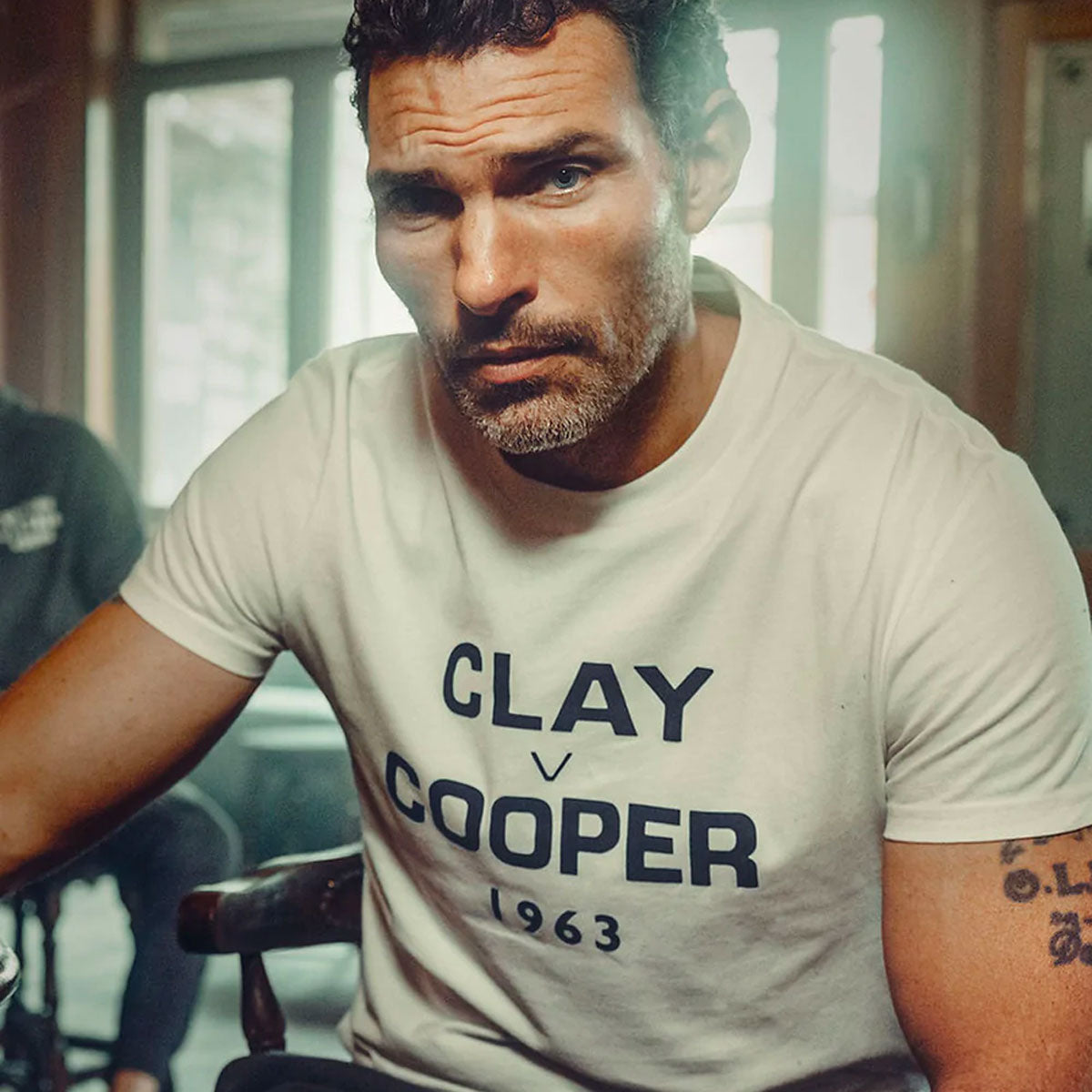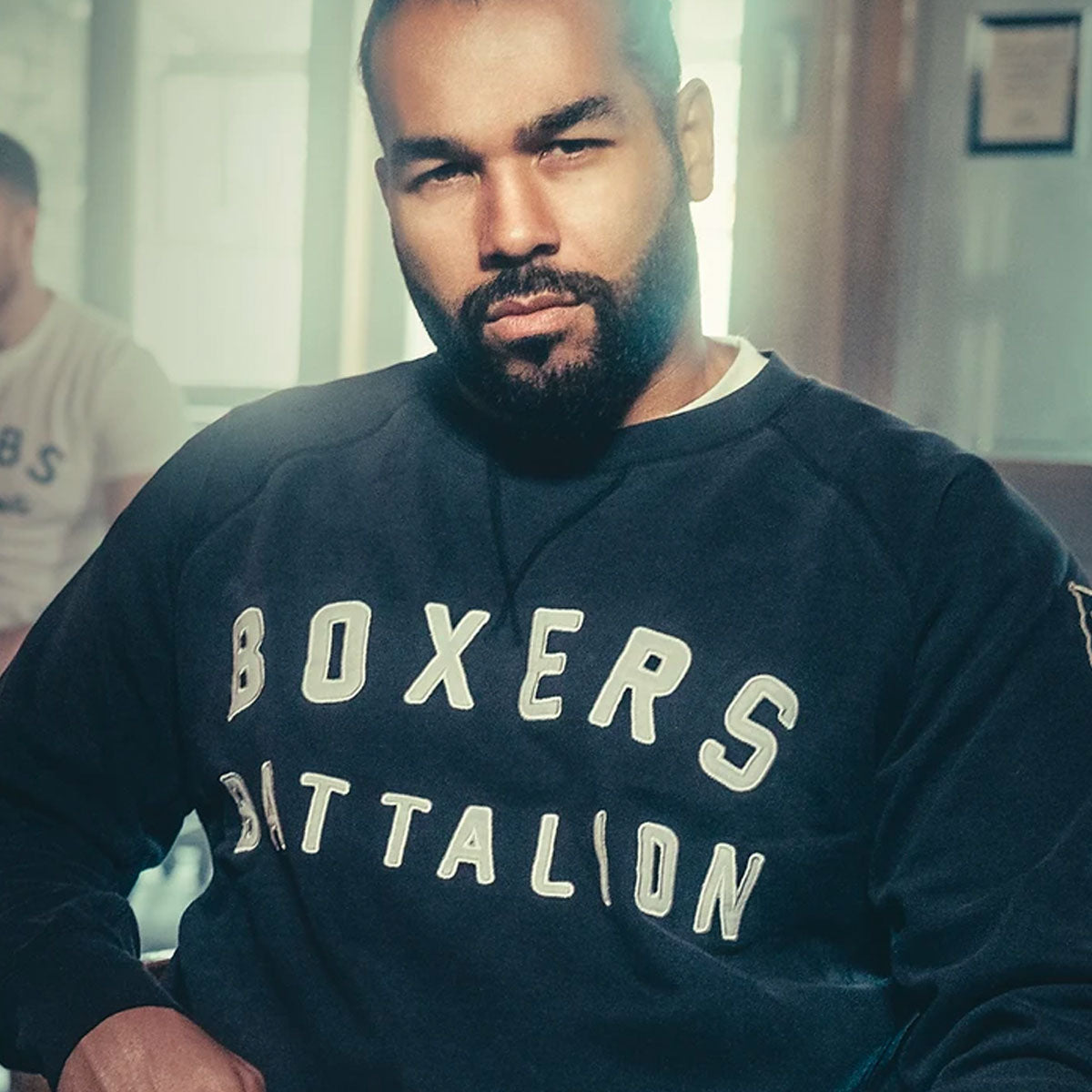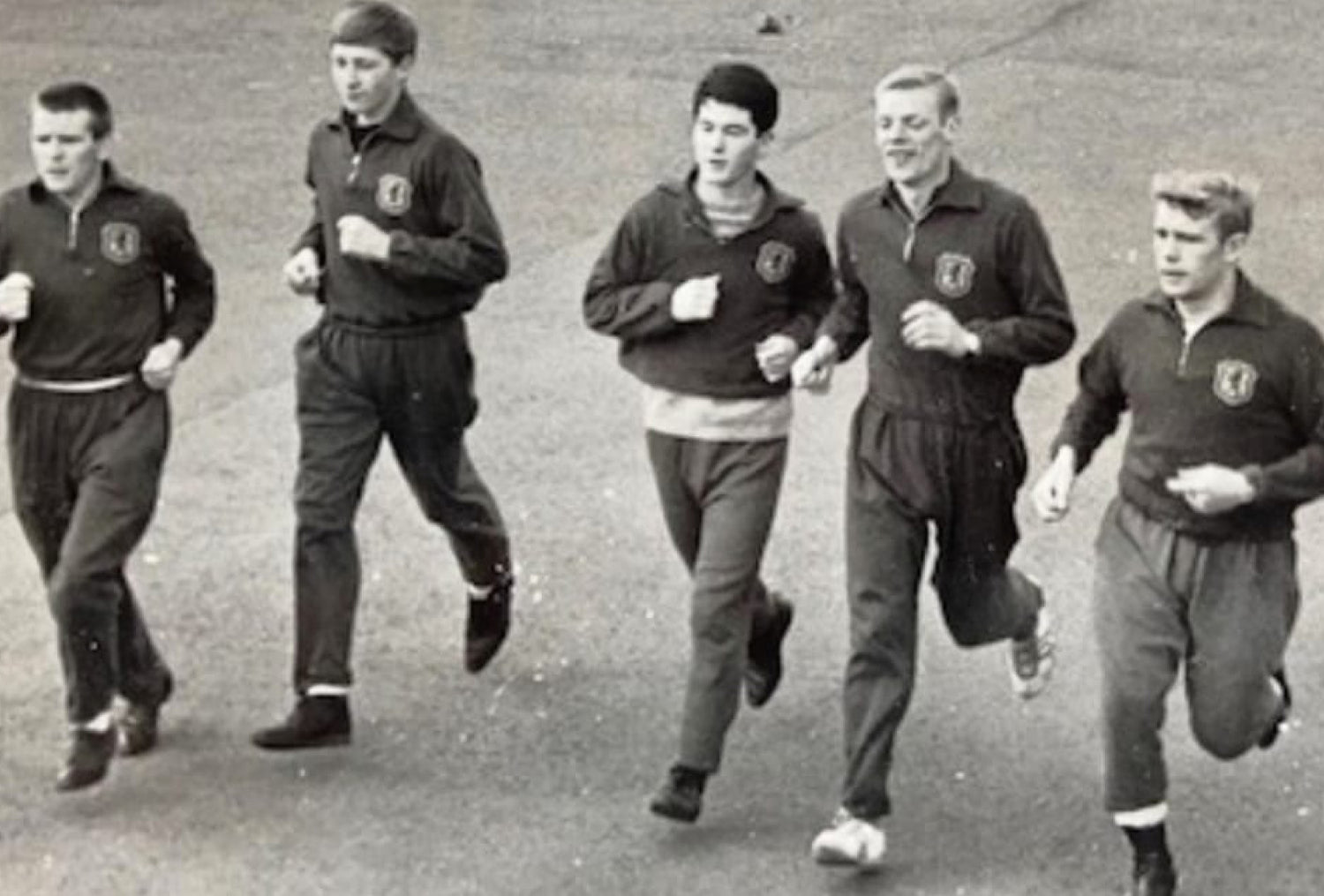‘Amateurs hardly ever had nicknames back then and that’s what makes me laugh now looking at the pro game. Everybody has got to have a nickname. Why not use the name you were given at birth? Boxing has become more like the old style WWE wrestling. They’ve adopted this circus like mantle for the sport. When I boxed, the halls would be packed with working class people who genuinely loved boxing, paid their ticket money and went to watch the fights. No booze, no dinners, no bad behaviour and no showboating by the boxers. It was simply authentic and that’s what I loved about it.’
Frank Gilfeather
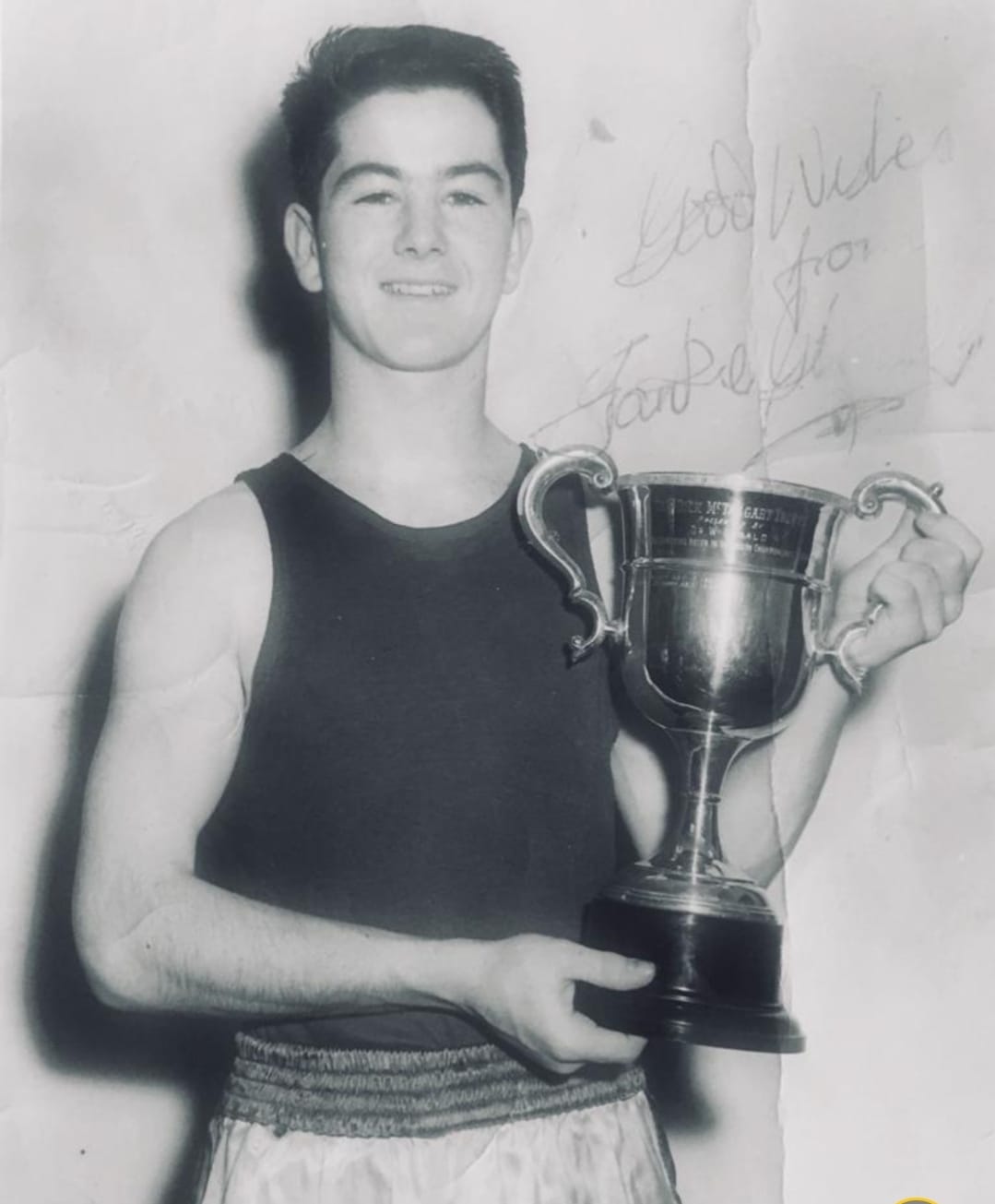
Born in Lochee, Dundee on 30 December 1945, Frank Gilfeather,
in his own words, ‘Was born into boxing.’ In recent months, the 78-year-old has become a social media sensation, wowing millions of onlookers with his speed, strength and technique. British Vintage Boxing caught up with Scotland’s fistic enigma as Gilfeather explained how his journey in the square ring started. “My dad ran a boxing club – in fact, over the years, he ran several boxing clubs, which were all very primitive back then in terms of facilities and setup. “As far as myself – well, the boxing was a family affair. The boxing club was only about a quarter of a mile walk from my council house in Lochee and from the age of four I used to just tag along with my dad and two older brothers. I went from just going along, to then learning about boxing and more importantly, enjoying it. That’s how it all started.
“My brother, Daniel was a British youth champion, but he gave up when he was about 15 or 16, because he stopped coming to training and found out that girls and going out dancing was far more interesting and better fun than going to hit a punchbag. My dad said, ‘If you’re not going to do it properly, you should stop altogether, because it’s too dangerous a sport to be half-hearted.’ Consequently, Daniel stopped. My other brother, Dennis Jr, named Jr because my dad was also called Dennis, was a good boxer. He was Scottish
champion and boxed for Scotland many times, home and abroad. He was nine years older than me and unfortunately passed away a few years ago, but Dan is still around and he’s 88.”
Lochee’s favourite fighting son racked up a very impressive amateur record. Gilfeather discussed his resume and the era he was boxing in. “Give or take, it was about 200 fights. I was trying to count them up recently and worked out that it could be 195, or it could be 205, so 200 is about right. I had about 30 defeats, but those were the days, growing up as a young boxer, when as
a youth for example, you were boxing every fortnight, maybe three times a month. You were boxing in your district and sometimes you’d box the same guy five times, but it was all about getting the experience. My dad took the view, if you are training night after night and there’s nothing at the end of it in terms of getting a fight, which is pretty much the case with a lot of young boxers these days, then you’re going to get hacked off and you’re going to quit. I was lucky, because I was boxing all the time and even more championship.
“In those days, when you boxed in a district championship or a Scottish championship, that was your third fight of the night. Whereas nowadays, certainly in Scotland, it’s spread over several weekends. We did it all on one night and that’s where you packed in all the experience and as a result, your expertise was better, because of that. And then, when you went abroad to box for Scotland, in Italy, Bulgaria, Denmark, Ireland, or wherever, you always boxed on the Thursday and then two days later on the Saturday. I won my first youth championship at the age of 14 after three fights, same again at 15 and 16, also after three fights. Then when I went into the seniors and it was the same deal.”
Gilfeather discussed his accolades. “I won all the district titles available to me in my age groups. Here’s the bizarre thing back then though. When you boxed in a club tournament, you very rarely got a trophy. You got something like a table lamp or an electric blanket, or something like that. My mum loved it. I’d come home and she say, ‘Did you win?’ I’d say, ‘Yes.’ She’d quickly ask, ‘What did you get tonight?’ She loved it. But when you boxed in the district or national championships, you got a trophy or a medal. I’ve actually only got one trophy left, which is when I won the Scottish seniors in 1965 and it is an oxidised silver statue of a boxer in a pose, which only stands about four inches high. There’s a photo of me with the Dick McTaggart trophy, which is a rather grand cup and I was standing with it in my boxing kit and I have no memory what I got that for! [See previous photo with trophy].
“When you boxed for Scotland, you got nice trophies and in the middle of it would be the Scottish flag and the flag of the country you were fighting in. Then a plaque on it to tell you what the tournament was all about. Crazy though, because I gave them all away to people who had helped me in the boxing club, which I regret that now, because I’ve been left with pretty much nothing. My dad had a trophy cabinet built in the living room so he could house all the stuff me and my two brothers won, but when he died and the house was being cleared, God knows what happened to all those trophies.”
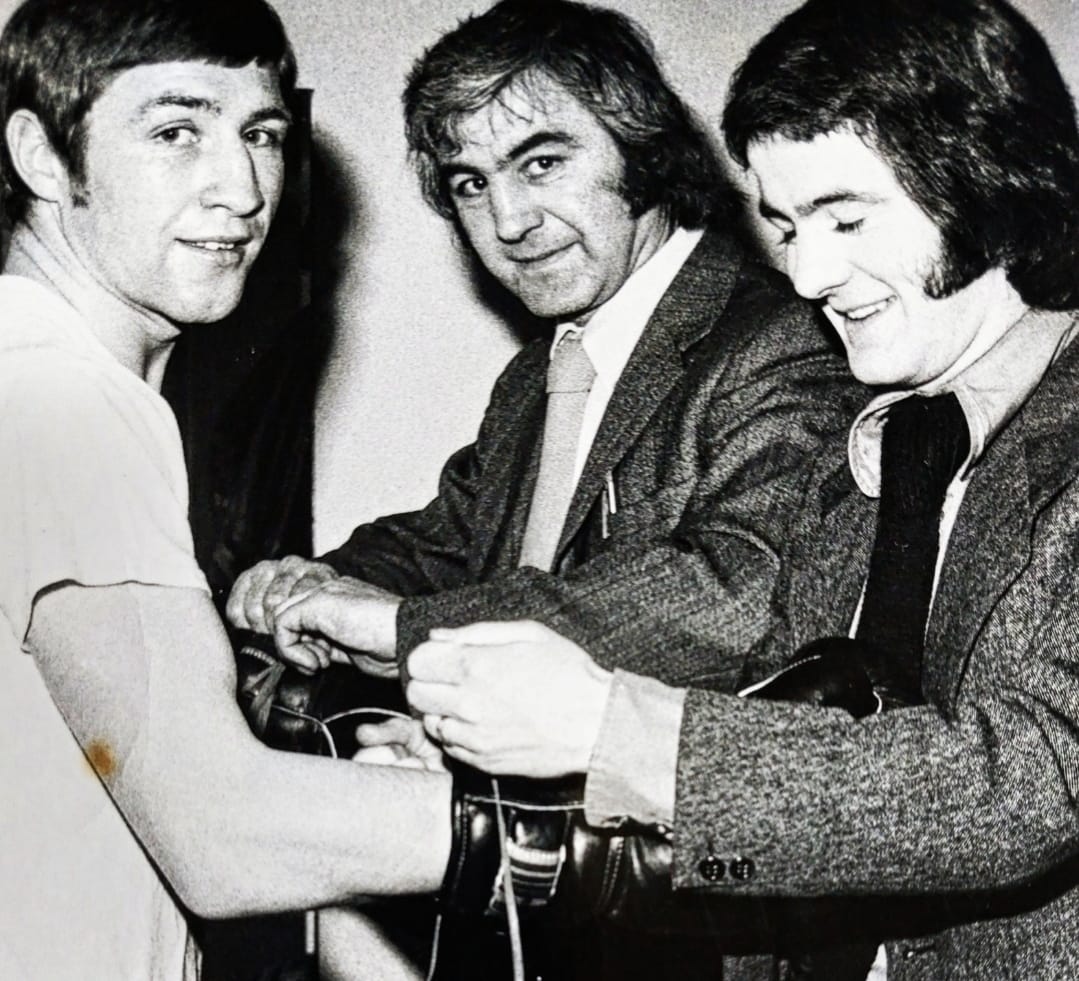
Having shared the ring with the best of Scotland and Europe’s amateur boxers of his time, Gilfeather recalled his toughest opponent. “That was probably Ken Buchanan [see photo on left] He and I had this kind of rivalry going on when we were both featherweights. It got to a stage where people were saying, ‘Who’s going to be the guy who gets the Scotland king featherweight vest?’ I went to Copenhagen to box featherweight for Scotland and had two fights. Won one, lost one. I lost the first one and then beat the same guy in his home city two days later. As a result, I was kind of holding that featherweight vest if you like.
“Then Buchanan’s club got in touch with my club, St Francis and said, ‘Why don’t they fight each other?’ At that time, I was beginning to grow out of the featherweight division, but I was trying to stay in it. I was comfortable at about 130lbs, whereas the featherweight limit was 126lbs, nine stone. When it came to the weigh-in for non-championship fights, you were always allowed two pounds over the limit, so I knew I’d have to cut down by a couple of pounds. Buchanan’s club said, ‘Let’s make the fight 9st 2lbs, which worked for me.
“My trainer at the time was a guy called Jim Brady, who had had near 160 fights as a pro. He’d boxed at an extremely high level and had been the British Empire bantamweight champion and boxed and beat people like Benny Lynch, Jimmy Warnock and Jackie Patterson who was a world champion. Here’s the thing – we didn’t have scales in the house or the boxing club. That’s how primitive it was. However, Jim Brady had an old antique set of jockey scales. For days in the build up to the fight, I was only eating fruit to get my weight down. Once or twice, we weighed me before the fight and I was on course, but on the night we weighed in and I was 8st 13lbs, which wasn’t ideal, but I didn’t
care. The fight was on.
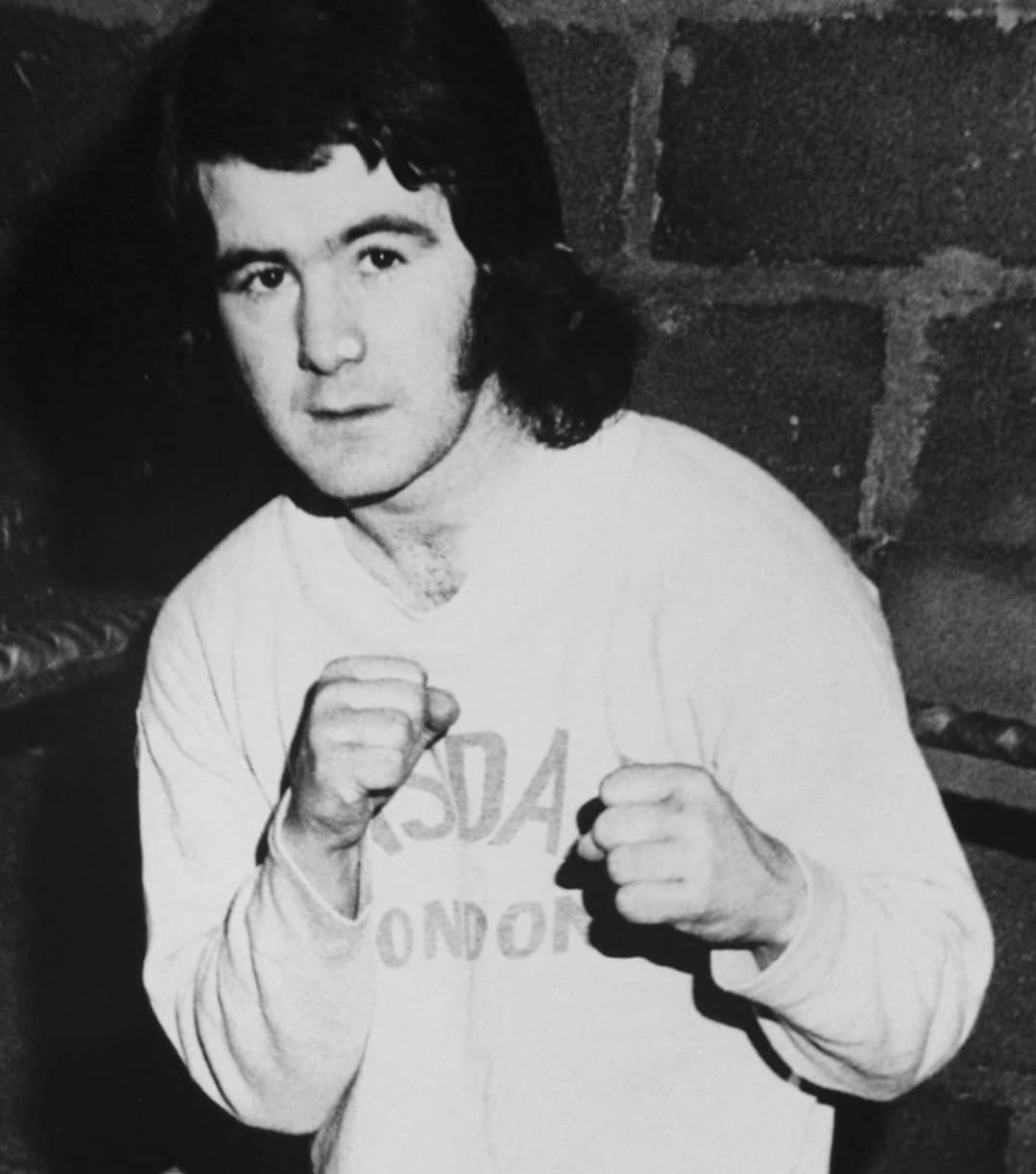
“Leith Town Hall, which was Buchanan’s patch, had 1,200 people turn up. It turned out to be a great fight and it was so atmospheric. Buchanan had that unbelievable long left jab, which I had to try and get under. I remember vividly, when I did manage to get under it, I’d punch to the heart area with right hands. Every time I connected, I remember hearing him wincing, but he won fair and square, on what was a great occasion. I made up my mind after that, I’d have to move up to lightweight. Ken Buchanan went on to do great things and became world lightweight champion as a professional. He was my toughest opponent, but I also fought so many tough guys across Europe. The difference is, they didn’t go on to achieve that level of greatness.”
After a decorated amateur career, at the age of 22, Gilfeather hung up the gloves. The affable Scot explained why the lure of turning professional didn’t draw him in. “I went through school winning everything in my age group and I made up my mind, ‘I’m going to turn professional.’ When I was 15, I was boxing on a show in Fife and that night, a young boxer who was older than me, was there to box exhibitions with sparring partners and his name was Walter McGowan.
“That night, I fought and won my contest. Walter’s dad, who was
called Joe Gans, after the great lightweight champion of the world, was also Walter’s manager and coach and when I came out of the ring, he said to me, ‘When Walter goes on later, would you like to give him a couple of rounds?’ I was 15 years old and I said, ‘Yeah. I’m happy to do that.’ My dad wasn’t happy when he heard this because he thought I was being used. “Anyway, I went ahead with the spar and I did well. Gans said to me, ‘You need to come down and train with us in Hamilton,’ which was about 90 miles from Dundee. I said, ‘Okay.’
“Me and my coach would go down on a Sunday and I’d spar with McGowan. So, I kind of fell into a thing of being his chief sparring partner. I say chief, because he had loads of local sparring partners, but I was the only one being invited to travel. My coach once asked Gans, ‘Why is it you’re having Frankie, (as I was known at the time), down so often?’ He replied, ‘Because, he’s the only one who can make Walter think.’” McGowan went on to become world
flyweight champion a few years later.
Gilfeather continued. “I sparred Walter for ages and I could tell that Gans wanted me to turn professional, but he never quite came out and asked. He knew I was young and had time. When I turned 17 though, he started saying to me, ‘You should think about turning professional.’ Then when I was 19, there was a dinner staged by the Daily Record newspaper and I was invited. At my table was a whole list of top professional boxers, including, John ‘Cowboy’ McCormack, who was briefly the British middleweight champion and had beaten Terry Downes, then there was John O’Brien, who was European featherweight champion, Chic Calderwood, guys like that. Hosting the table was Peter Keenan, who had been a wonderful bantamweight in his day, holding the European title. I was the Scottish champion and had just come back from the European championships and was sitting next to Keenan. He said to me out of the blue without making it sound like a question, ‘Here’s what’s going to happen. You will be managed by Al Phillips in London (Al had been a top featherweight in his day, who was known as ‘The Aldgate Tiger’) and you’ll box for Harry Levine, Mickey Duff and Mike Barrett, and in Scotland you’ll box for me. It was at that moment I said to him, ‘Peter
I’m looking around the table and the only guy who is smoking a Havanna cigar, drinking Napoleon brandy and wearing a very nice mohair suit is the promoter. That tells me something.’ He looked at me and said, ‘What you talking about?’ It was at that moment I came to the decision that I didn’t want to be a part of this. The other thing is, the longer I went on, the more I noticed that the bridge of my nose was beginning to get thicker and it was maybe vanity, or the thought of maybe finding a girlfriend, but all these things put together confirmed, ‘No. It’s not for me.’ I wanted to be the best journalist I could be and that’s where I concentrated my efforts. When I got to
21 or 22 years old, the gloss and enjoyment of being a boxer had gone and I knew that was me done.”
Gilfeather stuck with his talent in media, working for a variety of well known newspapers and major television channels, including Sky. His journalistic journey, which started over 55 years, only ceased in autumn of 2023, however, despite being in the public eye across a wide range of media outlets, his meteoric rise to fame as an internet sensation only occurred in recent months. At the time of writing (February 2024), Gilfeather has a quarter of a million followers on Tik Tok, with 2.2 million likes and 280,000 followers on Instagram. Gilfeather explained the genesis of his new found fame. “When I was in Dundee and I finished boxing, I used to MC a lot of shows and do the ring announcing. About 50 years ago, I was sat next to one of the officials at one of the shows and he said to me, ‘Why aren’t you coaching?’ I replied, ‘Because nobody has asked me.’ He looked at me puzzled. I then said, ‘You see – you can’t just walk into an amateur boxing club and say, ‘I’m going to be a coach.’ I just never felt it was my role. Also, by that time, I was busy in my job and had a young family, so I just carried on with what was in front of me.
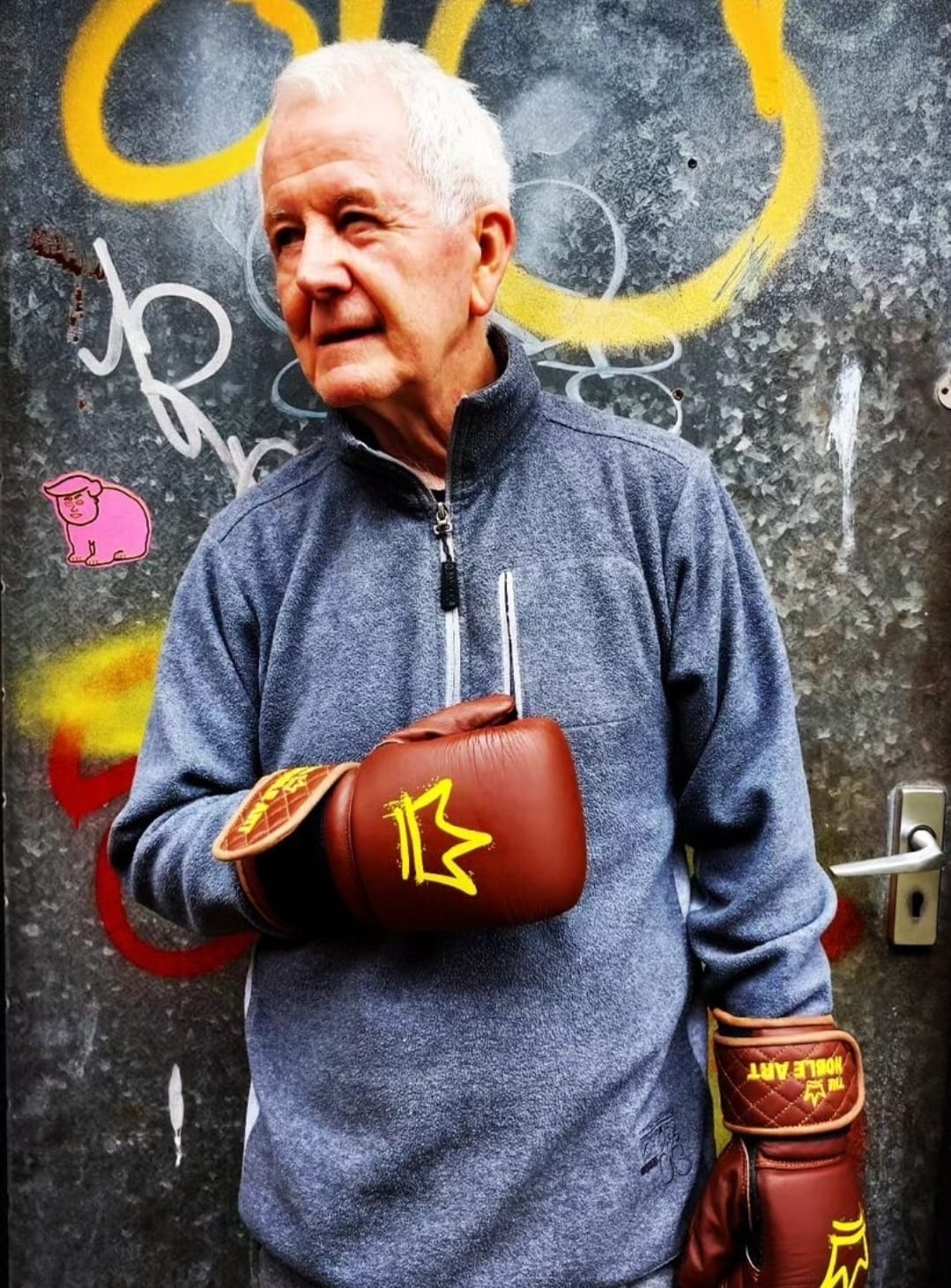
“I’d seen it with my dad and my brother Dennis who ran a club for decades and was an Olympic referee in 1972 at Munich and was in demand for refereeing international shows all over the world. But he was never at home, which was a hard one for his wife and family to take. I couldn’t subject my family to that and drifted away from boxing for many years, until about the turn of the millennium, when my kids had grown up and I decided to reconnect with boxing. I started to go regularly and train hard three times a week and then, that particular club asked, ‘Why don’t you help out with the coaching?’ I said, ‘Okay.’ I did it, not so much because they asked, but because I’d spotted faults in what some of the coaches were doing. They were teaching, in my view, the wrong things. I didn’t impose myself, but I started to have an input to what these kids were being taught.
Then about 18 months ago (summer of 2022), I was training in a gym in Aberdeen called Bodbox and the son of the guy who runs the gym is called Gregor McPherson. I went there just to do some training and my son Paul, who is an ex-journalist, was filming me in the ring talking to Gregor and showing him how to parry and block. He was a good youth boxer, but my concern was, without a good defence, he was going to get hurt. I wanted him to be able to look after himself.
“I was unaware that Paul was filming on his phone and he said after, ‘I’m going to put this on TikTok. I’d never seen TikTok, although I’d heard of it and within a matter of days, the following became huge. Paul said, ‘We should do more of those coaching videos of you down at the gym. Showing you on the punch bag, going through drills, that sort of thing.’ It went from 25,000 followers, to 50,000, then a quarter of a million. Then he started to post stuff on Instagram and up to a few weeks before, I had a little over 100 followers and now it’s knocking on to 300,000 and includes followers from the likes of journalist Tony Parsons and Anderson Silva, who I’d never heard of, to the disgust of my younger friends, not to mention a number of well known pop musicians and actors. I was astounded. I’ve had a few people being negative saying things like, ‘You’ve speeded that video up. How can you be so quick and powerful at your age?’ My reply is, ‘I wish I knew.’
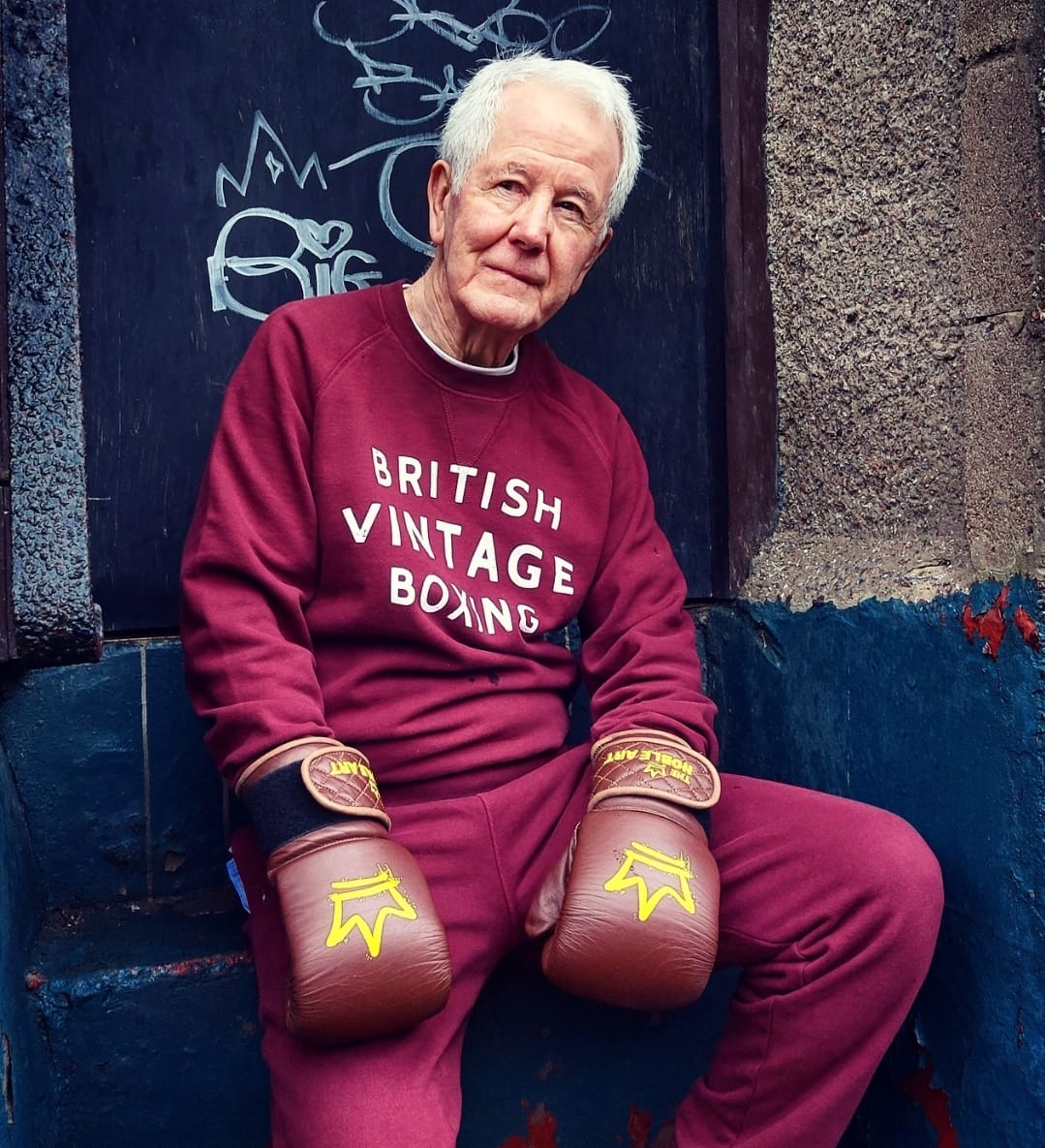
“When I was teaching, this company said they’d send me gloves and they were dreadful. I couldn’t clench my fists and the other thing was, the thumb part of the glove was attached to the main part of the glove, by a little piece of elastic, which made it even more difficult to clench your fist properly. I went to a session and saw everyone had these gloves and asked, ‘Hands up who can’t close their fist,’ and everyone’s hands went up.
“After trying these free ones I was sent, I went back to my old bag mitts that I still had and I could clench my first, because they had no padding at the front and very little padding on the knuckles. I thought, ‘What if you build in more padding on the knuckles, but retained the flexible thumb, so you could make a fist.’ We did that. We found a manufacturer and are now selling these gloves all over the world, with the brand name, ‘The Noble Art’. We ask people to get back to us with an honest critique. Many have said, ‘It’s changed their life in boxing terms,’ because they can punch with greater control and accuracy.”
At the age of 78, Gilfeather has been around the sport of boxing for around 75 years. With experience on his side and a wise boxing brain, he signed off with some sage words for the next crop of up and coming fighters. “Remember the whole ethos of boxing - Hit without being hit back. I see too many young boxers who are unaware of how to defend themselves. What is the point of you boxing if you’ve landed say 31 punches during the contest and you’ve won on points, but your opponent has landed 30 and come up short by one punch? You’ve taken 30 punches too many. Rely on technique and skill to make your opponent make mistakes and then you can capitalise on those mistakes. Learn the skill more than the aggression.”
Click here to shop Frank's THE NOBLE ART bag mitts
CREDITS
Article/Interview: Paul Zanon, has had nine books published, with almost all of them reaching the No1 Bestselling spot in their respective categories on Amazon. He has co-hosted boxing shows on Talk Sport, been a pundit on London Live, Boxnation and has contributed to a number of boxing publications, including, Boxing Monthly, The Ring, Daily Sport, Boxing News, Boxing Social, amongst other publications.
FROM OUR BLOG
DISCOVER THE LEGENDS
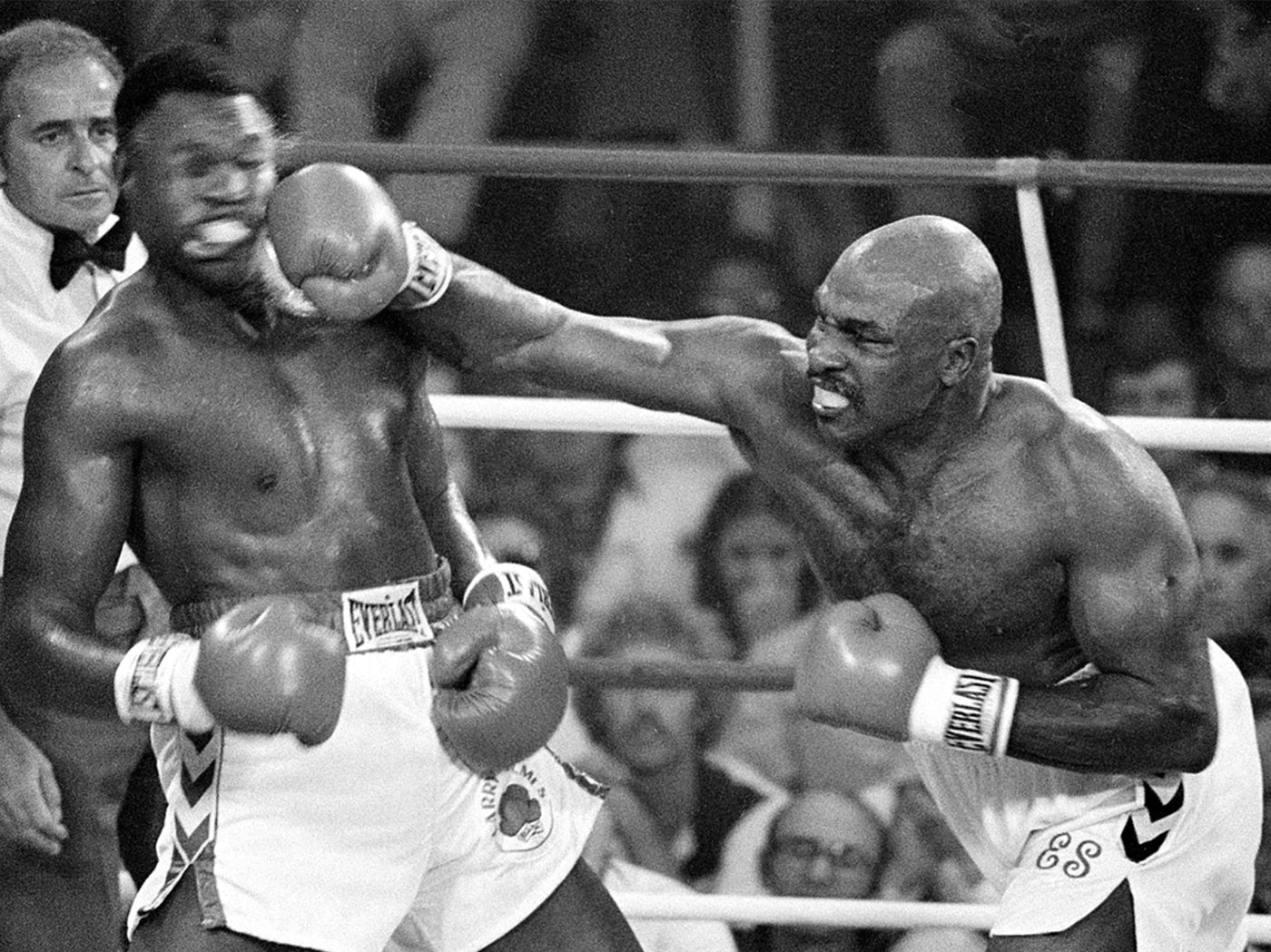
Following on from Part Two, we will now be venturing across the Big Pond to look at four of America’s finest heavyweight fighters to lace em-up, who never achieved their crowning moment in the squ...
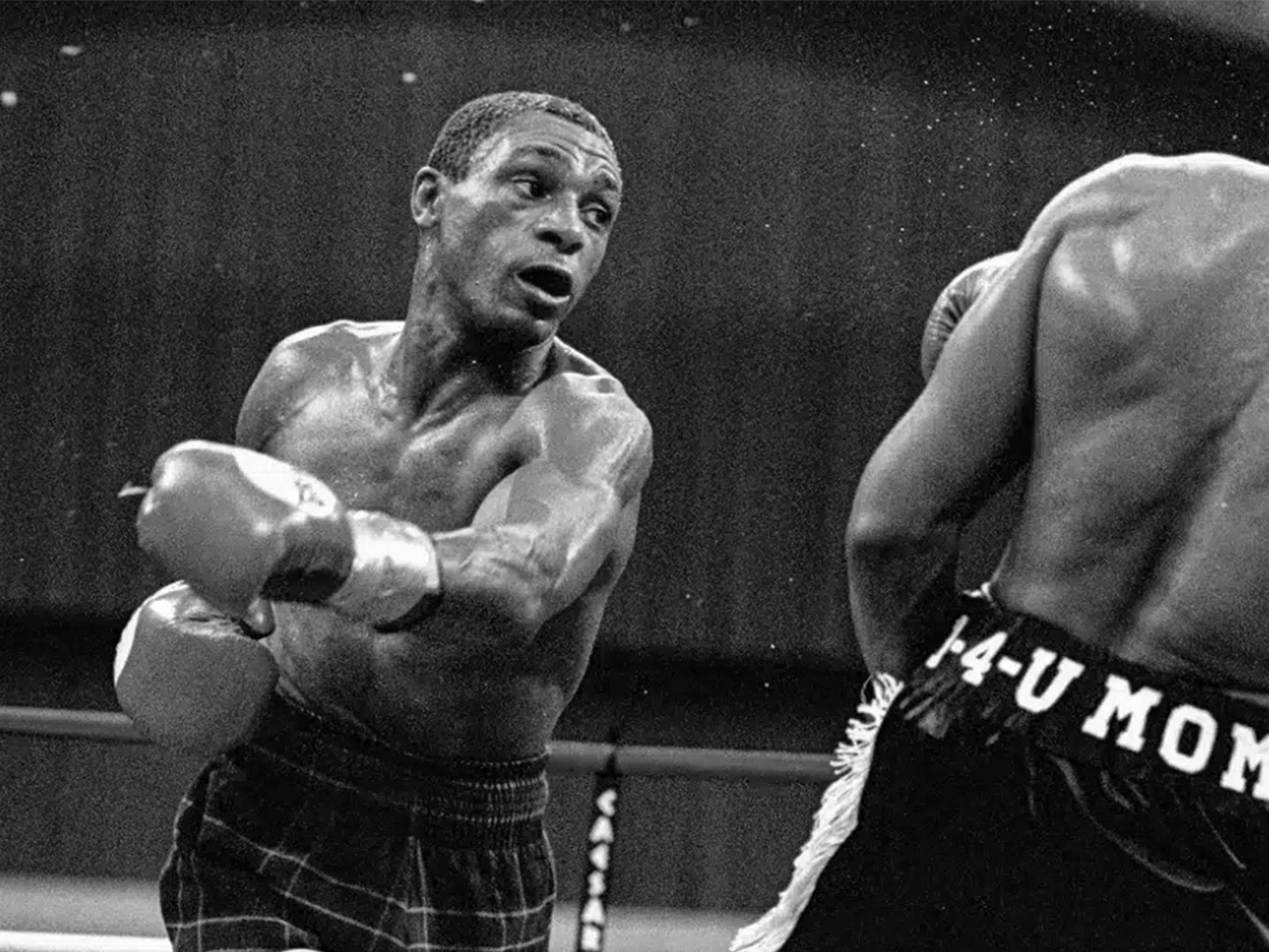
Following on from Part One, we will now be looking at a further four iconic British greats never to fully grasp a world title, albeit, not for the want of trying. TONY SIBSON Leicester born Sibson ...
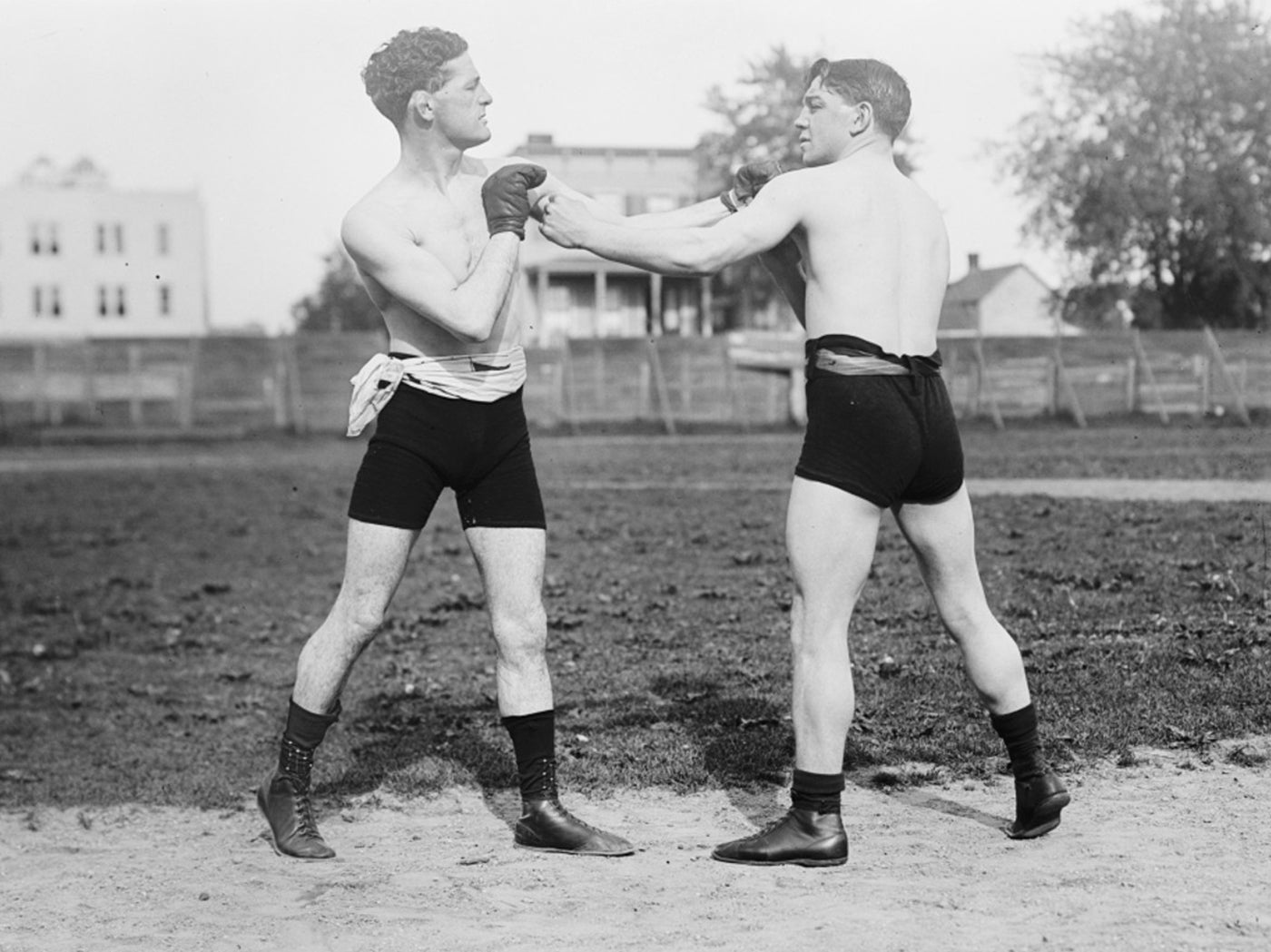
Ever since the Queensberry Rules were drafted in 1865, Britain has proudly boasted a world champion in every weight division. From unlimited rounds and horsehair filled gloves, to modern day 12 rou...

